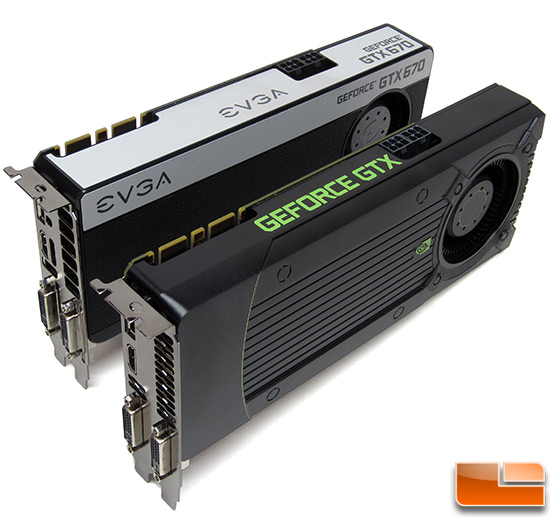NVIDIA & EVGA GeForce GTX 670 2GB Video Card Review
Final Thoughts & Conclusions
Over the past two months we have seen NVIDIA successfully launch three GeForce 600 series video cards based off the GK104 Kepler GPU that have changed the way gamers are buying high-end video cards. Prices for the currently released NVIDIA GeForce GTX 600 series cards
are a whopping $999 for the GeForce GTX 690 dual-GPU behemoth, $499 for
the GeForce GTX 680 and $399 on the GeForce GTX 670. It is pretty common to see AMD and NVIDIA trade victories at various price points for who has the best video card, but in the $399 to $999 price range it is clear to us that NVIDIA has raised the bar and has the better performing product. Not bad, considering that NVIDIA manged to topple their opponent with just a single GPU core!

The NVIDIA GeForce GTX 670 has four Graphics Processing Clusters (GPCs) with 7 Streaming Multiprocessor (SMX) units, 1,344 CUDA parallel processing cores, 112 texture units, and 32 ROP units. There’s a total of 2GB of GDDR5 video memory, running at 6,008MHz over a 256-bit memory interfaces to seal the deal. Those specifications are enough for the GTX 670 to compete on the same playing field as overclocked versions of the AMD Radeon HD 7970 that cost more as standard versions cost $459! When we fired up Battlefield 3 at 1920×1080 and saw we had an average of 72.6 FPS on the EVGA GeForce GTX 670 SC 2GB ($419.99) we were impressed as the MSI R7970 Lightning 3GB ($599.99) was getting just 71.3 FPS and costs $180 more!

The performance of the NVIDIA GeForce GTX 670 2GB and the EVGA GeForce GTX 670 SC 2GB are impressive at there default clock speeds and even more so when overclocked. For example the NVIDIA GeForce GTX 670 reference cards comes at 915MHz on the GPU base clock and can Boost up to 980MHz. The EVGA GeForce GTX 670 SC that we got is factory overclocked to 967MHz on the base clock and can boost up to 1046MHz. Thanks to the EVGA Precision X overclocking utility we were able to increase the base clock up to 1097MHz (1176MHz Boost) for a healthy overclock! We increased the power target +122%, so in games we were able to hit 1280MHz on the core and that gave us some insane performance numbers. We are talking about over 10,000 points in 3DMark11 here and performance that rivals the NVIDIA GeForce GTX 590 and AMD Radeon HD 6990 dual-GPU monsters that were the fastest cards in the world back in 2011!
NVIDIA has done a remarkable job with the GeForce GTX 670 and it is the card to buy right now. The performance is close to that of a GeForce GTX 680 and the price tag is $100 lower, so there really isn’t much bad to say about the card. The performance, power usage, appearance and overclocking abilities are all in order.
That said it will be interesting to see what NVIDIA plans on doing with the GK110 GPU and we have a feeling we might find out next week during GPU Technology Conference. There have been rumors that NVIDIA will be releasing a GK110 powered GeForce GTX 685 and that they company will slowly phase out the GeForce GTX 680. Last month we would have thought that idea was crazy, but looking at how close the GTX 670 and GTX 680 are in terms of performance it could be plausible. It’s always fun to speculate, but we will find out the real story soon.
At the end of the day the NVIDIA GeForce GTX 670 is a great graphics card that is going to bring a world of hurt to AMD. NVIDIA has been unable to keep the GeForce GTX 680 in-stock due to a variety of issues, so it will be interesting to see how well they can do with the GeForce GTX 670. Historically, the lower skus are usually easier to make as they use fallout from higher skus. Since the GTX 670 uses a trimmed down GTX 680 core with some features fused off it should be readily available.

Legit Bottom Line: The NVIDIA GeForce GTX 670 has become the card to have if you are looking in the $400 price range and want the best of everything!

Comments are closed.